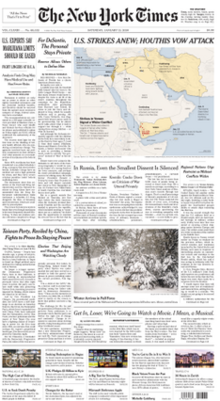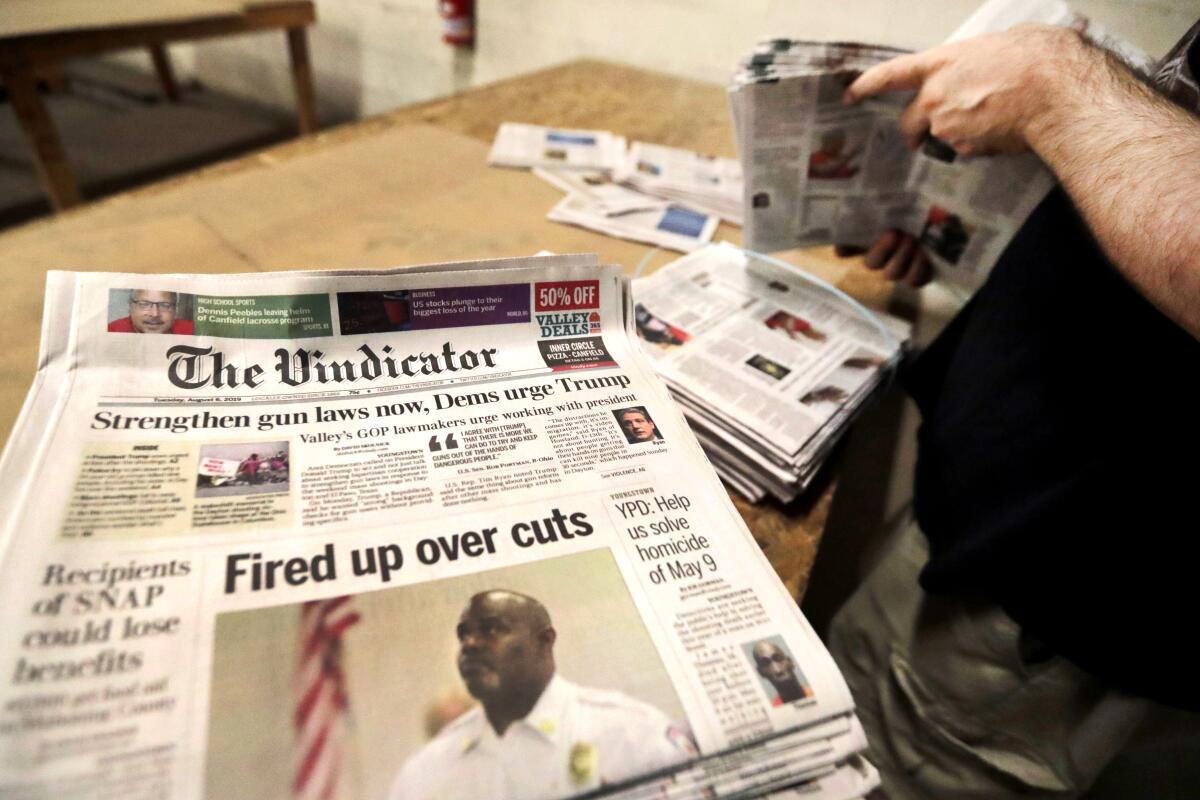The News Articles Ideas
Excitement About News Articles
Table of ContentsWhat Does News Articles Do?What Does News Articles Do?Unknown Facts About News ArticlesThe Definitive Guide to News ArticlesSee This Report about News Articles
Excellent knowledge of various topics gives students an one-upmanship over their peers. Also though digital and social media are easily available, we should not neglect exactly how crucial it is to review the papers. Parents have to attempt and instill the behavior of reviewing a paper as an everyday regimen to proceed the legacy of the adored print tool.News tales also contain at the very least one of the complying with important attributes loved one to the intended audience: closeness, importance, timeliness, human interest, anomaly, or consequence.
Within these limitations, newspaper article additionally intend to be extensive. However, other variables are included, some stylistic and some originated from the media kind. Amongst the bigger and a lot more reputable papers, fairness and balance is a significant consider providing details. Commentary is generally confined to a different area, though each paper might have a different total angle.
Newspapers with an international audience, for instance, tend to make use of a more official style of composing. News Articles.; common design guides consist of the and the United States News Design Publication.
All About News Articles
As a policy, journalists will certainly not utilize a lengthy word when a short one will do. They use subject-verb-object construction and vibrant, energetic prose (see Grammar). They use narratives, instances and metaphors, and they seldom depend on generalizations or abstract concepts. News authors try to avoid utilizing the same word more than when in a paragraph (in some cases called an "echo" or "word mirror").
However, headlines occasionally omit the subject (e.g., "Jumps From Watercraft, Catches in Wheel") or verb (e.g., "Feline lady fortunate"). A subhead (also subhed, sub-headline, subheading, caption, deck or dek) can be either a secondary title under the primary headline, or the heading of a subsection of the write-up. It is a heading that comes before the major text, or a group of paragraphs of the primary text.

Extra billboards of any of these kinds may show up later in the write-up (particularly on subsequent pages) to entice more reading. Such signboards are likewise used as guidelines to the short article in various other sections of the magazine or site, or as promotions for the piece in various other publication or websites. Common framework with title, lead paragraph (summary in vibrant), other paragraphs (information) and contact info.
Instance of a hard-lead paragraph NASA is suggesting one more space project. The agency's spending plan demand, introduced today, included a plan to send an additional goal to the Moon. This time around the company hopes to establish a lasting center as a jumping-off point for other space journeys. The budget plan requests approximately $10 billion for the task.
The NASA announcement came as the firm requested $10 billion of appropriations for the project. An "off-lead" is the 2nd essential front page information of the day. The off-lead shows up either in the top left edge, or directly below the lead on the. To "hide the lead" is to begin the write-up with background information or information of secondary importance to the visitors, forcing them to review more deeply right into a short article than they need to need to go now in order to find the important factors.
News Articles Fundamentals Explained
Typical use is that or more sentences each form their own paragraph. Journalists normally define the company or structure of a news story as an inverted pyramid. The necessary and most intriguing components of a story are put at the beginning, with supporting information following in order of decreasing value.
It permits individuals to discover a subject to only the deepness that their interest takes them, and without the charge of details or nuances that they could think about pointless, however still making that info offered to a lot more interested visitors. The inverted pyramid structure also enables short articles to be trimmed to any approximate size throughout design, to fit in the space available.
Some writers begin their tales with the "1-2-3 lead", yet there are lots of type of lead available. This format invariably begins with a "5 Ws" opening paragraph (as described over), adhered to by an indirect quote that offers to support a significant component of the very first paragraph, and afterwards a direct quote to sustain the indirect quote. [] A twist can refer to numerous points: The last story current program; a "delighted" story to end the program.
Longer posts, such as magazine cover posts and the pieces that lead the inside areas of a newspaper, are recognized as. Function tales differ from straight information in several methods.
All about News Articles
The journalist typically look at here now information communications with interview subjects, making the item extra personal. A feature's very first paragraphs usually relate an appealing minute or occasion, as in an "unscientific lead". From the details of a person or episode, its view rapidly expands to generalizations concerning the tale's subject. The section that signals what a function has to do with is called the or signboard.

The Editor's Tool kit: A Reference Overview for Beginners and Professionals (2001) Allan M. Siegal blog here and William G. Connolly. The New York Times Guidebook of Style and Use: The Official Design Guide Utilized by the Writers and Editors of the World's A lot of Authoritative Paper (2002) M. L. Stein, Susan Paterno, and R.